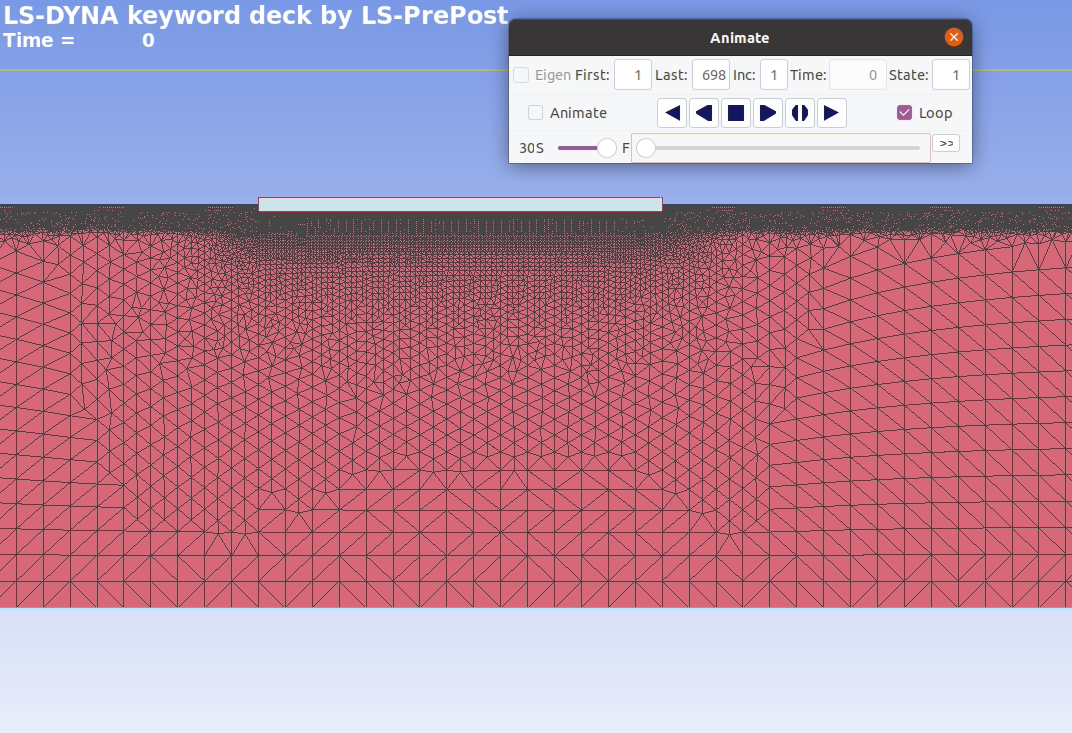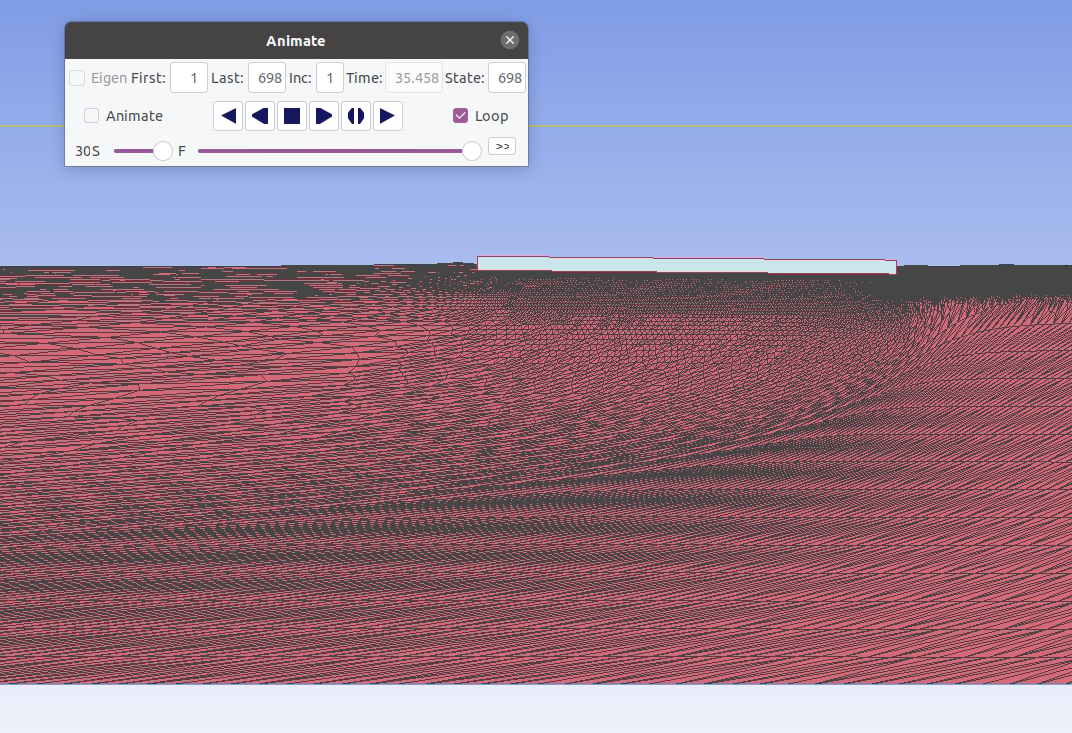-
-
October 2, 2025 at 1:31 am
JxBx
SubscriberHello everyone,
I am currently working on a 2D numerical wave tank in LS-DYNA using the ICFD solver with free surface (level set). The setup is intended to model wave–plate interaction (floating ice floe analog).
Validation so far:
Pure wave case (no plate): validated successfully vs. 2nd-order Stokes theory, NRMS error < 5%.
Plate fixed at the surface: amplitudes and dynamics look reasonable, again consistent with theory.
Problem:
When the plate is allowed to float freely (flexible or rigid), I observe a strong and seemingly unphysical drift:
Example: wavelength ≈ plate length → simulated mean drift velocity ≈ 0.317 m/s, while expected 2nd-order Stokes drift at the surface is only ≈ 0.067 m/s.
This means the simulated drift is about 4–5 times too high.
As a consequence, the mesh starts to distort as the plate drifts. The mesh really got stretched and seems to have become stuck to the bottom boundary and the FSI boundary, which surrounds the drifting plate.
Additionally, the wave amplitude in front of the plate is reduced compared to Stokes second-order theory (error ~10%), and the wave shape does not match the expected incident wave profile.
Suspected causes:
Possible issues with the partitioned FSI time coupling (implicit structural solver + ICFD).
Insufficient drag or dissipation near the plate underside.
Mesh deformation/remeshing handling when the plate drifts too far.
Question:
Has anyone experienced similar problems with unphysical drift in floating-body ICFD-FSI cases? Do you have recommendations on how to reduce the drift, e.g. through.
Any advice would be greatly appreciated. I can also share my latest K-file and validation plots if helpful.
Thanks in advance!
-
October 2, 2025 at 1:34 am
-
- You must be logged in to reply to this topic.



-
3977
-
1461
-
1272
-
1124
-
1021

© 2025 Copyright ANSYS, Inc. All rights reserved.









